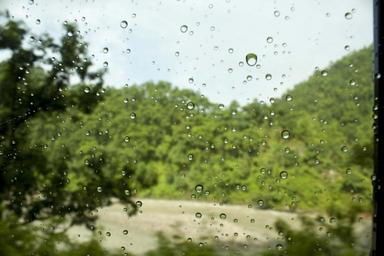Introduction
In our fast-paced, modern lives, air quality often takes a backseat to other pressing concerns. However, with increasing awareness of health issues linked to air pollution and allergens, air purifiers have become essential household devices. But what happens when your air purifier starts displaying error codes? Navigating these error codes can be frustrating, especially if you’re not familiar with what they mean. Fear not! In this comprehensive guide, we will explore the various error codes associated with air purifiers and provide insights into troubleshooting and maintenance, ensuring you can decode air purifier error codes like a pro!

Decoding Air Purifier Error Codes Like a Pro!
When it comes to maintaining good indoor air quality, understanding how your air purifier operates is crucial. Just as cars display warning lights for maintenance needs, air purifiers showcase error codes to inform users about potential issues. The importance of decoding these error codes cannot be overstated; they are indicators of your unit's health and functionality.
Understanding the Basics: How Air Purifiers Work
Air purifiers use filters to trap pollutants such as dust, pet dander, smoke particles, and even certain bacteria and viruses. The most common types of filters include HEPA (High-Efficiency Particulate Air) filters, activated carbon filters for odors, and UV filters which eliminate pathogens. Understanding how each filter works will give you insight into why an error code may appear.
Common Error Codes Explained
Red Light on Air Purifier
A red light typically indicates that the filter needs replacing or that there’s an issue with airflow. It serves as an urgent reminder to check your device.
Filter Change Light
If this light remains illuminated even after changing the filter, it might require resetting according to the manufacturer's instructions.
Error Code E1 or E2

Flashing Lights
Flashing lights may indicate that the appliance is in standby mode or requires immediate attention regarding its filters.
Overheating Indicator
Many models come equipped with thermal sensors that shut off the machine if overheating occurs; this protects both you and the unit.
Low Humidity Alert
Some advanced models also monitor humidity levels; if it's too low for effective purification, an alert will inform you to adjust your environment.
Troubleshooting Common Issues
1. Why is My Air Purifier Always Red?
If your air purifier constantly shows a red light despite changing filters:
- Check for clogs in the pre-filter. Ensure all components are reassembled correctly after filter replacement. Consult the user manual for specific reset instructions.
2. Air Filter Reset Instructions
Different brands have different methods for resetting filter indicators:
- Locate the reset button on your model. Hold it down for a few seconds until you see a change in indicator lights. Verify through trial operation that everything is functioning normally afterward.
3. Addressing Sensor Errors (E1/E2)
These errors often require more technical intervention:
- Turn off the unit and unplug it for five minutes. Plug it back in and restart; if problems persist, consult customer support for further assistance.
4. Maintaining Optimal Functionality
Regular maintenance extends beyond changing filters:
- Clean dust from exterior surfaces frequently. Keep surrounding areas free from obstructions to ensure proper airflow. Periodically check internal components as per manufacturer guidelines.
Best Practices for Using Your Air Purifier
To maximize efficiency:
- Place your air purifier in central locations where airflow is unobstructed. Operate it continuously during high pollen seasons or when indoor activities generate dust. Monitor humidity levels if using alongside other appliances like dehumidifiers or humidifiers—should I close the door when using a humidifier? Generally yes; this helps maintain ideal humidity levels inside without losing moisture rapidly.
Advanced Features of Modern Air Purifiers
Modern units come packed with features aimed at enhancing user experience:
Smart Connectivity
Many contemporary models allow connectivity via smartphone apps providing real-time monitoring of air quality metrics—like VOCs (Volatile Organic Compounds), particulate matter (PM), etc., allowing users deeper insights into their living environments' healthiness.
Energy Efficiency Ratings (EER)
Consider models rated by Energy Star which signify lower energy consumption yet high performance—helping reduce electric bills over time while keeping indoor spaces clean!
FAQs About Air Purifiers
1. What does the red light mean on my air purifier?
The red light usually signifies that it's time to replace or clean the filter.
2. Should I close the door when using a dehumidifier?
Yes, closing doors creates a sealed environment conducive for effective moisture removal by minimizing outside moisture intrusion.
3. How do I reset my air filter indicator?
Typically involves locating a specific reset button on your model; consult user manual for exact steps tailored to yours.
4. What constitutes sensitive groups regarding air quality?
Sensitive groups include children, elderly individuals, pregnant women & those with respiratory conditions—these populations may experience heightened effects from poor indoor air quality conditions compared to others.
5. Are bladeless fans more energy-efficient than traditional fans?
Bladeless https://newperspectives139.iamarrows.com/what-to-do-when-your-air-purifier-is-always-red fans often consume less power due their streamlined design & technology advancements but actual savings depend greatly on usage frequency & duration compared against conventional options available today!

6. How can I increase humidity in my grow tent without using a humidifier?
Utilizing water trays or wet sponges placed strategically within can facilitate evaporative cooling—thus raising overall moisture content effectively without additional equipment investment!
Conclusion
Decoding air purifier error codes like a pro doesn't have to be daunting! Armed with knowledge about common indicators and troubleshooting techniques, you're now better prepared to handle any hiccups along the way while ensuring cleaner indoor environments for yourself and loved ones alike! Remember always refer back toward manufacturer-specific guidelines whenever unsure—after all proper upkeep results in optimal functionality over time leading ultimately towards healthier households everywhere!